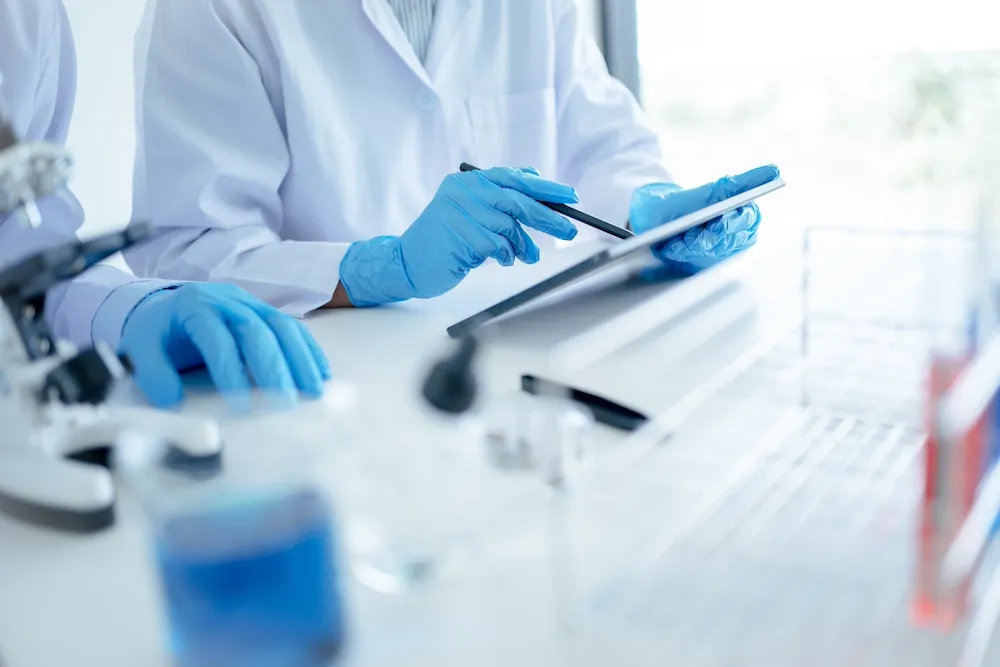
Ban on hazardous substances
Tattoo inks will soon be subject to tougher and more precise restrictions than before. Tattoo inks are mixtures of several chemicals that can contain hazardous substances and cause serious effects on human health. The restrictions in question will take effect under the REACH (Registration, Evaluation and Authorisation of Chemicals) regulation from 4th January 2022.
The aim is to make the colours used in tattoos and permanent make-up safer, thus avoiding chronic allergic reactions and other serious skin reactions and effects. These restrictions concern substances that are carcinogenic, toxic for reproduction, sensitising or irritating.
According to scientific research, certain substances such as ink pigments can migrate from the skin to different organs such as the lymph nodes and the liver. Also, when a tattoo is removed by laser, the pigments and other components are broken down into small particles, and if they contain harmful chemicals, they are released into the body. This is why it is important to ask about the long-term effects of these substances on the whole human body, not just the tattooed area.
4000 hazardous chemicals could be limited in their maximum concentration by the regulation. These include certain azo dyes, carcinogenic aromatic amines, polycyclic aromatic hydrocarbons (PAHs), metals and methanol.
However, no safer and technically adequate alternatives are currently available for two pigments: Blue 15 and Green 7. The European Commission and the Member States have agreed on a transition period of 24 months from 4th January 2023 to replace them with safer substances.
The restriction requires, as a second step, a harmonisation of the labelling on the packaging of tattoo and permanent make-up inks in the EU in order to ensure a correct implementation of the restriction. Thus, mixtures will have to mention this type of use on their labels, together with a list of ingredients and relevant safety statements.
These new measures are included in Annex XV of the REACH Regulation and add more than 90 substances to the list of restricted substances, including the two blue and green pigments.
Controversy and scientific progress
These new restrictions have not been well received by European tattoo artists, especially the ban on the two commonly used pigments blue 15 and green 7. According to the professionals, this represents a fatal loss for their industry and their art. Indeed, these pigments can be found in many mixtures that would represent 65% to 70% of their colour palette.
SMEunited, formerly known as UEAPME, (Association of Craft and SME's in Europe) had asked the European Commission and Echa to make an exemption for the two green and blue pigments included in the draft regulation.
But the Commission deleted the derogations from the draft regulation because they were not justified.
Although tattooing dates back to thousands of years, very little research has yet been done on its consequences. The questions related to the safety of tattooing show that there are still many unclear points to be revealed.
According to scientists, it seems that sometimes some manufacturers do not know what exactly is in their inks. The raw materials purchased to make the ink may contain impurities, so the actual labels are not always correct. This new restriction therefore aims at protecting human health first and foremost and represents a good step forward in making the industry safer.
Do you want to know more about the restrictions on dangerous substances under REACH?

For more information, do not hesitate to contact Christian Freneuil or one of our experts !
Ban on hazardous substances
Tattoo inks will soon be subject to tougher and more precise restrictions than before. Tattoo inks are mixtures of several chemicals that can contain hazardous substances and cause serious effects on human health. The restrictions in question will take effect under the REACH (Registration, Evaluation and Authorisation of Chemicals) regulation from 4th January 2022.
The aim is to make the colours used in tattoos and permanent make-up safer, thus avoiding chronic allergic reactions and other serious skin reactions and effects. These restrictions concern substances that are carcinogenic, toxic for reproduction, sensitising or irritating.
According to scientific research, certain substances such as ink pigments can migrate from the skin to different organs such as the lymph nodes and the liver. Also, when a tattoo is removed by laser, the pigments and other components are broken down into small particles, and if they contain harmful chemicals, they are released into the body. This is why it is important to ask about the long-term effects of these substances on the whole human body, not just the tattooed area.
4000 hazardous chemicals could be limited in their maximum concentration by the regulation. These include certain azo dyes, carcinogenic aromatic amines, polycyclic aromatic hydrocarbons (PAHs), metals and methanol.
However, no safer and technically adequate alternatives are currently available for two pigments: Blue 15 and Green 7. The European Commission and the Member States have agreed on a transition period of 24 months from 4th January 2023 to replace them with safer substances.
The restriction requires, as a second step, a harmonisation of the labelling on the packaging of tattoo and permanent make-up inks in the EU in order to ensure a correct implementation of the restriction. Thus, mixtures will have to mention this type of use on their labels, together with a list of ingredients and relevant safety statements.
These new measures are included in Annex XV of the REACH Regulation and add more than 90 substances to the list of restricted substances, including the two blue and green pigments.
Controversy and scientific progress
These new restrictions have not been well received by European tattoo artists, especially the ban on the two commonly used pigments blue 15 and green 7. According to the professionals, this represents a fatal loss for their industry and their art. Indeed, these pigments can be found in many mixtures that would represent 65% to 70% of their colour palette.
SMEunited, formerly known as UEAPME, (Association of Craft and SME's in Europe) had asked the European Commission and Echa to make an exemption for the two green and blue pigments included in the draft regulation.
But the Commission deleted the derogations from the draft regulation because they were not justified.
Although tattooing dates back to thousands of years, very little research has yet been done on its consequences. The questions related to the safety of tattooing show that there are still many unclear points to be revealed.
According to scientists, it seems that sometimes some manufacturers do not know what exactly is in their inks. The raw materials purchased to make the ink may contain impurities, so the actual labels are not always correct. This new restriction therefore aims at protecting human health first and foremost and represents a good step forward in making the industry safer.
Do you want to know more about the restrictions on dangerous substances under REACH?

For more information, do not hesitate to contact Christian Freneuil or one of our experts !







